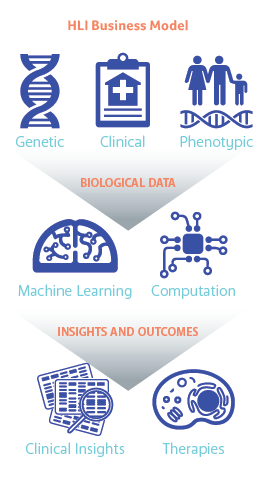Living Forever with Human Longevity Inc.

This billion dollar startup is planning to keep you healthy and active on your 120th birthday. (Image by Brad Parkins)
What if we understood the software that runs the human body as well as a Goldman Sachs investment banking analyst understood Microsoft Excel financial model that he pulled an all-nighter last night building? What if we could identify and fix any malfunction in the software that runs the human body that could potentially lead to disease as fast as the analyst could discover what is causing the “#REF!” error in his freshly minted model?
Human Longevity Inc. (“HLI”) is a harnessing the power of big data and machine learning to gain a better understanding of how the human body works to revolutionize healthcare. In April 2016, the company raised $220 million at a $1.2 billion valuation to pursue its strategy of aggregating the world’s largest reliable database of genetic, behavioral, biological, and clinical medical data, and is applying supercomputing and machine learning algorithms to make discoveries within that massive data-set. (Newswise, 2016) The opportunity for HLI exists because of the convergence of four trends: improvement in computing power, exponential human genome sequencing cost reduction, advancement in machine learning technologies, and the health care system moving towards ‘value-based’ models (Rundel, 2015). HLI is leveraging this new technology to build the digital infrastructure and tools to allow us to better understand the software that run’s our bodies to predict, prevent, and cure disease.
HLI’s business model is to create value and capture revenue from the following specific activities:
- (B2B) Discovering and licensing diagnostics, pharmaceuticals, therapies and vaccines;
- (B2B) licensing its database to biotechnology, insurance companies, hospitals, and academic organizations; and
- (B2C) concierge medicine services through the Health Nucleus (described below) (Human Longevity Inc., 2016)
The company has developed a vertically integrated operating model than that can be segmented into four operating units, positioning the company to execute its business model:
- Information Generation and Discovery – creating the world’s largest genetic sequencing center allowing high-speed and low cost sequencing from different collaborators and industries
- HLI Database and Knowledgebase TM – developing proprietary machine learning and analysis tools enabling the development of the world’s largest medical database
- Genome Analysis – Machine learning to provide analysis of the HLI Database and Knowledgebase to provide integrated assessment health status and risk factors providing predictive, preventive, and individualized care.
- Health Nucleus – The world’s highest end annual physical checkup, charging $25,000 for the most comprehensive assessment of an individual’s health status that involves 8 hours of testing at its flagship office in La Jolla, San Diego of essentially everything that can be tested in the human body (Full genome & microbiome sequencing, metabolome and clinical testing and imaging, etc.)(Human Longevity Inc., 2016)
HLI’s business model is particularly clever because it has found a way to create an income producing data collection model by targeting wealthy individuals and charging them $25,000 for their Health Nucleus visit and 600 page comprehensive individual health assessment report. (Parkins, 2016)
There is an inherent network effect associated with this operating model. As more and more data is collected, the value of and insights that can be inferred from the dataset increases. This means that an individual can continuously learn more about themselves as the number of participants in the dataset grows. The company’s current operating model can be characterized as centralized, narrow, and deep and is not aligned to best deliver value on its business model, which is dependent upon the network effect associated with aggregating as much data as possible.
I believe that HLI’s business and operating models would be better aligned by pursuing a decentralized, distributed, wider, and shallower operating model. Specifically, I would suggest that the company offer a less comprehensive health assessment that focused on a few key tests through various clinics around the world that is within reach to the masses. The company’s primary focus should be maximizing data collection to build out its database and charging $25,000 is not the best way appeal to the masses.
Further, I think that the company should focus on partnering with hospitals around the country and offer its sequencing and technological capabilities to those hospitals at or potentially below cost in exchange for de-identified patient clinical medical data and samples (of course with the patient’s permissions) to build its database bigger faster to maximize value from the network effect.
HLI believes that most diseases are predictable years before they happen and with the right insights, data, and monitoring the company can develop individualized longevity plans to prevent the most likely risk factors from manifesting. HLI’s mission is to add 40 healthy and productive years to human life.
However, in evaluating HLI’s business model, I think the question that we should be asking is: what will be the effects on climate change associated with the resources required from the resulting population growth if they achieve their mission…Is this a goal we should even be aiming for?
(800 Words)
Works Cited
Human Longevity Inc. (2016). Retrieved from Corporate Fact Sheet: http://www.humanlongevity.com/wp-content/uploads/HLI-FactSheet.pdf
Human Longevity Inc. (2016). Frequently Asked Questions. Retrieved from Revolutionizing Healthcare: http://www.humanlongevity.com/wp-content/uploads/HLI-FAQ.pdf
Newswise, P. (2016, April 04). Human Longevity, Inc. Completes $220 Million Series B Financing. Retrieved from http://www.prnewswire.com/news-releases/human-longevity-inc-completes-220-million-series-b-financing-300245761.html
Parkins, D. (2016, August 13). Adding Ages. The Economist.
Rundel, M. (2015, April 24). WIRED. ‘Supercharged’ genomics: 100 years of breakthroughs possible in 10 years.



Thanks SkyStyne for the interesting post. I came across HLI last year while surveying the whole genome sequencing space and though HLI is not a particularly sizable business from a financials standpoint (yet), its fundraising ability certainly drew a lot of attention in the community.
That being said, after a deeper dive into the business (and you seem to allude to it as well), I would argue management needs to iterate on their business model to land on a truly differentiated and high value offering. Its financing ability appears to be more related to its all-star cast of founders (Craig Venter, the CEO and Chairman, is known as one of the first to sequence the human genome over a decade ago) than a clear value proposition to the market.
One of the reasons is that a ton of genome sequencing companies exist out there, though not always with the explicitly flashy goal of making humans live forever but certainly ventures focused on early disease screening and cancer detection exist. The challenge for HLI and its peers will be to differentiate the insights they can bring to the raw computing outputs of a genome sequencer, which I think exists largely in the public domain today and perhaps, should stay there. Who really owns the genetic data that results from such screenings and does society really want this data to exist in silos at various biotech ventures instead of amassed at scale in a public repository? The long-term public good of shared genetic information I think represents a significant threat to HLI as regulators will seek to implement mandatory sharing of patient genetic data in the long run. If the data becomes freely available (as you note), the network effects built up by a single company are eroded.
Until then, these companies will continue to compete on cost as they race to make this product more affordable. I agree with you that the premium priced package is very limiting to its goal of amassing relevant datapoints. Unfortunately, this rests largely on the data science and hardware talent at the company which is difficult to ‘own.’ Indeed, just this fall HLI lost its chief data scientist to a new competitor in the space, Grail (1).
References:
1. http://www.forbes.com/sites/luketimmerman/2016/09/27/google-translate-star-leaves-venters-human-longevity-for-illumina-backed-grail/#2b1f142d769f
As you noted, network effects are very important for this data to be valuable. How do you get the first people to complete this test when it will be much more valuable for people to do it in several years after thousands of others have already done so? I believe your suggestion of a lower price is a good start, but I think the company must go even further. If HLI followed up with patients several years post-test based on their improved data sets I think their initial value to the patients would be much larger. In addition, this could also be used as a carrot to get patients to return for another test. Ultimately, their price seems to be totally inaccessible at this point and unless they can figure out a way to get insurers to pay for at least some portion of the cost they will be fighting quite an uphill battle.
Really interesting company. I agree with your point on partnerships being the best option for accessing vast amounts of data, but it should be simpler pretty soon. Health Information Networks are being build around the country, which will all be consolidated at a national level, and API access will exist to allow companies such at HLI to access de-identified data.
Human Longevity is doing some interesting, and necessary, work. While I think we must work on extending our lifespans and efficacy of the human body through science, I worry that the company is taking on VC capital at a $1.2b valuation and adding the pressure of monetization at this early stage of their lifecycle. Human Longevity needs to focus on reinvesting and creating the most effective database that they can – this work should be subsidized by health and government agencies, as that’s how critical it is. The fleeting nature of venture dollars may put a strain on the investment in data needed to create the necessary longevity of the venture.
https://newrepublic.com/article/128977/whats-wrong-craig-venter